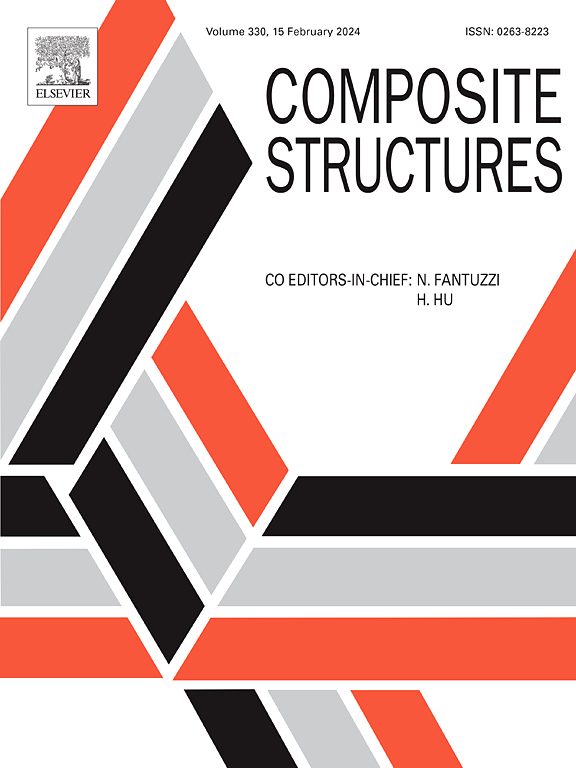New analytical buckling solutions for non-Lévy-type graphene-reinforced composite laminated plates
IF 6.3
2区 材料科学
Q1 MATERIALS SCIENCE, COMPOSITES
引用次数: 0
Abstract
This study explores the buckling behavior for non-Lévy-type graphene-reinforced composite (GRC) laminated thin and moderately thick plates, with novel analytical solutions derived. The material properties for GRC laminated plates are assessed through an extended Halpin-Tsai model, while the governing buckling equations are derived within a Hamiltonian framework. The difficulty of analytical solution caused by the non-Lévy-type boundary conditions (BCs) is addressed by using the symplectic superposition method. Three different graphene distributions along the thickness direction are considered. The analytical solutions in this study are well verified by the literature results or the finite element numerical results. Based on the solutions, a detailed discussion is performed on the quantitative relationships between the critical buckling loads and the modulus ratios, number of layers, aspect ratios, laying angles, graphene distribution forms, temperatures, width-to-thickness ratios, graphene volume fractions, and BCs.
求助全文
约1分钟内获得全文
求助全文
来源期刊

Composite Structures
工程技术-材料科学:复合
CiteScore
12.00
自引率
12.70%
发文量
1246
审稿时长
78 days
期刊介绍:
The past few decades have seen outstanding advances in the use of composite materials in structural applications. There can be little doubt that, within engineering circles, composites have revolutionised traditional design concepts and made possible an unparalleled range of new and exciting possibilities as viable materials for construction. Composite Structures, an International Journal, disseminates knowledge between users, manufacturers, designers and researchers involved in structures or structural components manufactured using composite materials.
The journal publishes papers which contribute to knowledge in the use of composite materials in engineering structures. Papers deal with design, research and development studies, experimental investigations, theoretical analysis and fabrication techniques relevant to the application of composites in load-bearing components for assemblies, ranging from individual components such as plates and shells to complete composite structures.
 求助内容:
求助内容: 应助结果提醒方式:
应助结果提醒方式:


